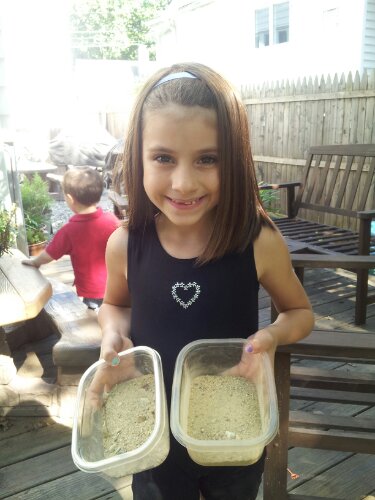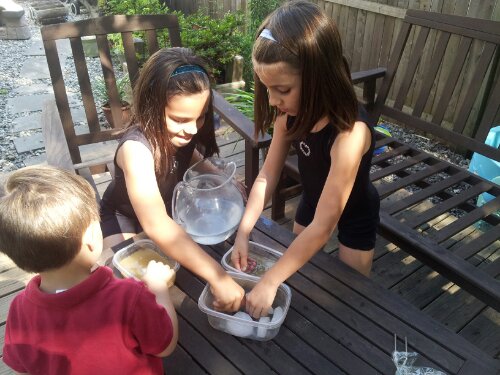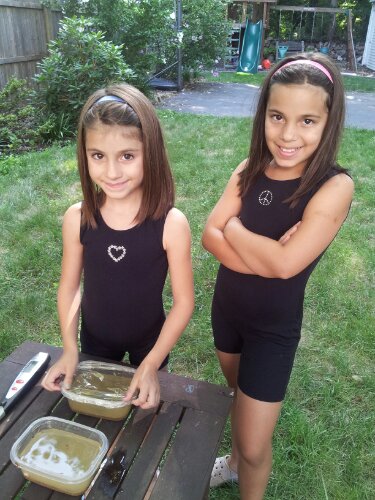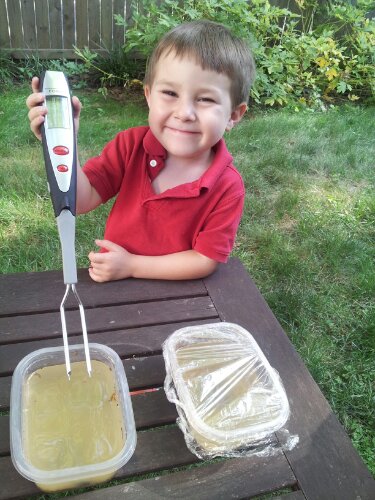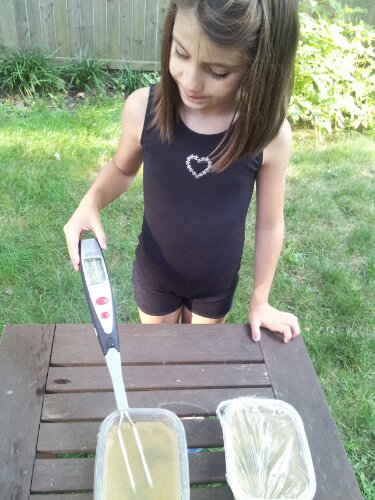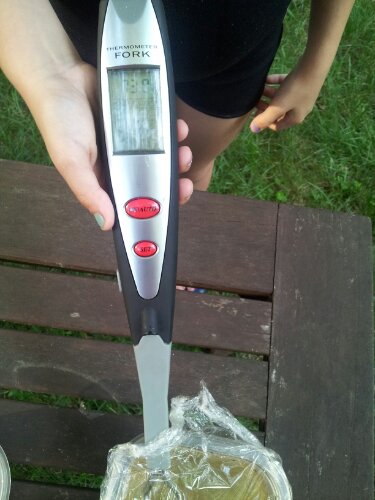Scientists from all over the world have spent time in Antarctica studying the ozone layer and our changing climate. From an interesting book called How We Know What We Know About Our Changing Climate we learn more about Global Warming and the effect that an increased production of fossil fuels is having on our environment. In the book we read about the ways that children are helping scientists to track the changes in climate and weather patterns. In New York, children track the migration of birds and compared their results to similar data from 50 years ago. They notice that birds are migrating 3 weeks earlier than they once did. Similarly, flowers are blooming several days earlier than they did only a couple of decades ago. In Antarctica, scientists keep track of the warming trends and note that the glaciers are rapidly receding.
After gymnastics today, we decide to make our own global warming experiment and see if we can recreate the greenhouse effect. Here’s how we do it:
We take two clear containers of the same size and fill them with some sand.
Add the same amount of rocks to each container:
Pour water into each container.
And add a little bit of ice.
Measure each container to make sure that they are the same temperature and then cover one container tightly with plastic wrap.
Now let the containers get some sun and wait a little while. The covered container will replicate the effect that an increase in CO2 might have on our climate. An increase in CO2 (from the burning of fossil fuels) warms the earth’s atmosphere by absorbing heat from the sun as it bounces off the earth’s surface. We give it some time and then HZ is anxious to take the temperature of each container. After about 30 minutes we note a one degree difference…
We wait some more and then take another measurement. After 2 hours the uncovered container measures 70 degrees…
And the covered container measures 73 degrees!
After another 2 hours we take the temperature again and find the same 3 degree difference. Very interesting!

